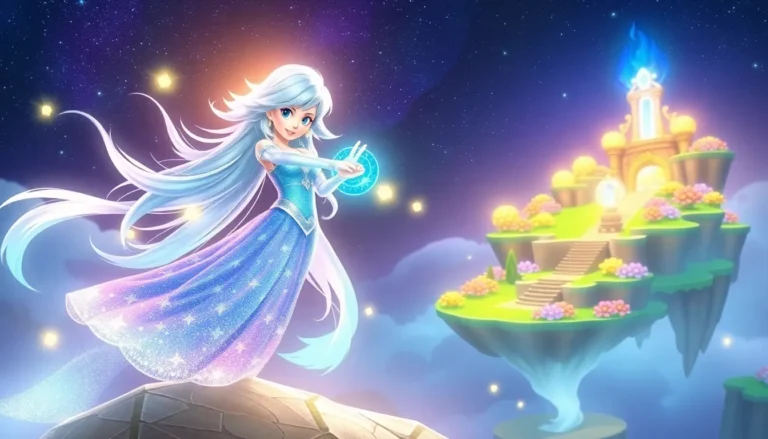Table of Contents
ToggleIn a digital landscape overflowing with noise, captivating content isn’t just important: it’s essential. Imagine trying to catch the attention of a cat chasing laser pointers. That’s how readers dart from one piece of content to another if it’s not engaging. So, how can businesses and creators become the shiny laser pointer? Enter Redwebzine, a beacon of creativity designed to empower writers, marketers, and anyone with a story to tell. This article explores how to harness the art of captivating content, making your message not just seen, but felt.
Understanding the Importance of Captivating Content

Captivating content isn’t just about catchy phrases and clever wordplay. It’s about communicating your message in a way that resonates deeply with your audience. In fact, according to studies, compelling content can enhance customer engagement by up to 400%. With attention spans dwindling, a well-crafted piece can be the difference between a potential customer clicking away or converting. Content that captivates doesn’t just inform: it compels action. Whether it’s a blog post, video, or social media update, captivating content keeps the audience coming back for more.
Not only does engaging content generate more shares and visibility, but it also establishes authority. When organizations create valuable content, they position themselves as thought leaders in their industry. This trust can lead to loyalty, a crucial advantage in today’s competitive market.
Identifying Your Target Audience
Knowing your audience is the bedrock of captivating content. You wouldn’t serve gourmet cuisine to a toddler more interested in chicken nuggets. Understanding demographics such as age, interests, and even psychographics can help tailor your content effectively.
Start by creating buyer personas that detail your ideal audience. Use surveys, social media insights, and analytics to gather data. Knowing who you’re speaking to should inform everything from tone and language to the type of content you produce. For example, if your audience skews younger, platforms like TikTok may be more effective than traditional blogs or newsletters.
Types of Content That Engage Readers
Different types of content resonate differently with audiences. Blogs might be ideal for in-depth knowledge, while infographics can simplify complex information. Consider mixing various formats:
- Blogs: Great for SEO, allowing in-depth exploration of topics.
- Videos: Perfect for product demonstrations or storytelling.
- Podcasts: Ideal for audiences on the go, offering conversations and expert insights.
- Webinars: Great for interactive learning.
Experimentation is the name of the game. A/B testing different formats can reveal what captures your audience’s attention. That way, you can consistently align your content strategy with what engages your readers.
Creating Compelling Headlines and Introductions
First impressions count, especially in the digital realm. A compelling headline can mean the difference between a click and a scroll past. Effective headlines often include numbers, evoke curiosity, or promise solutions, think “10 Tips for More Engaging Content” or “Unlock Your Content’s Potential Now.”
Once the readers click, the introduction must hook them like a well-cast fishing line. An intriguing question, surprising fact, or relatable anecdote can hold readers’ attention. The key is not only to grab interest but also to give them a reason to stay tuned. Set clear expectations about the value they’ll receive by reading further.
Utilizing Visual Elements Effectively
Visual elements are the icing on the content cake. Research shows that articles with relevant images receive 94% more views. Use high-quality images, videos, and infographics to complement your written content.
When used wisely, visuals can break up text, making it easier to digest. Also, they can enhance storytelling. An engaging infographic illustrating a process or a chart showcasing data can clarify concepts that might lose readers with just text. Also, don’t forget about accessibility. Always include alt text for images to make content more inclusive.
Strategies for Promoting Your Content
Once you’ve created captivating content, what’s next? Promotion is critical. Social media platforms are powerful tools for amplifying your message. Each platform has its own culture and audience, so tailor your approach.
Consider leveraging email marketing to distribute content directly to interested readers. Collaborating with influencers who align with your message can also give your content a boost. SEO strategies play an essential role too: optimizing your content for search engines enhances visibility. Regularly share updates, engage with your audience, and encourage sharing to maximize your reach.
Measuring the Impact of Your Content
Finally, how do you know if your content is truly captivating? Metrics are your best friends. Start with key performance indicators (KPIs) like page views, bounce rates, social shares, and conversion rates.
Tools like Google Analytics can provide insights into audience behavior, helping identify what resonates. If certain topics or formats perform better than others, learn from that data. Save time by focusing future content efforts on what works best. Regularly measuring content impact helps in refining strategies and ensuring ongoing engagement.





